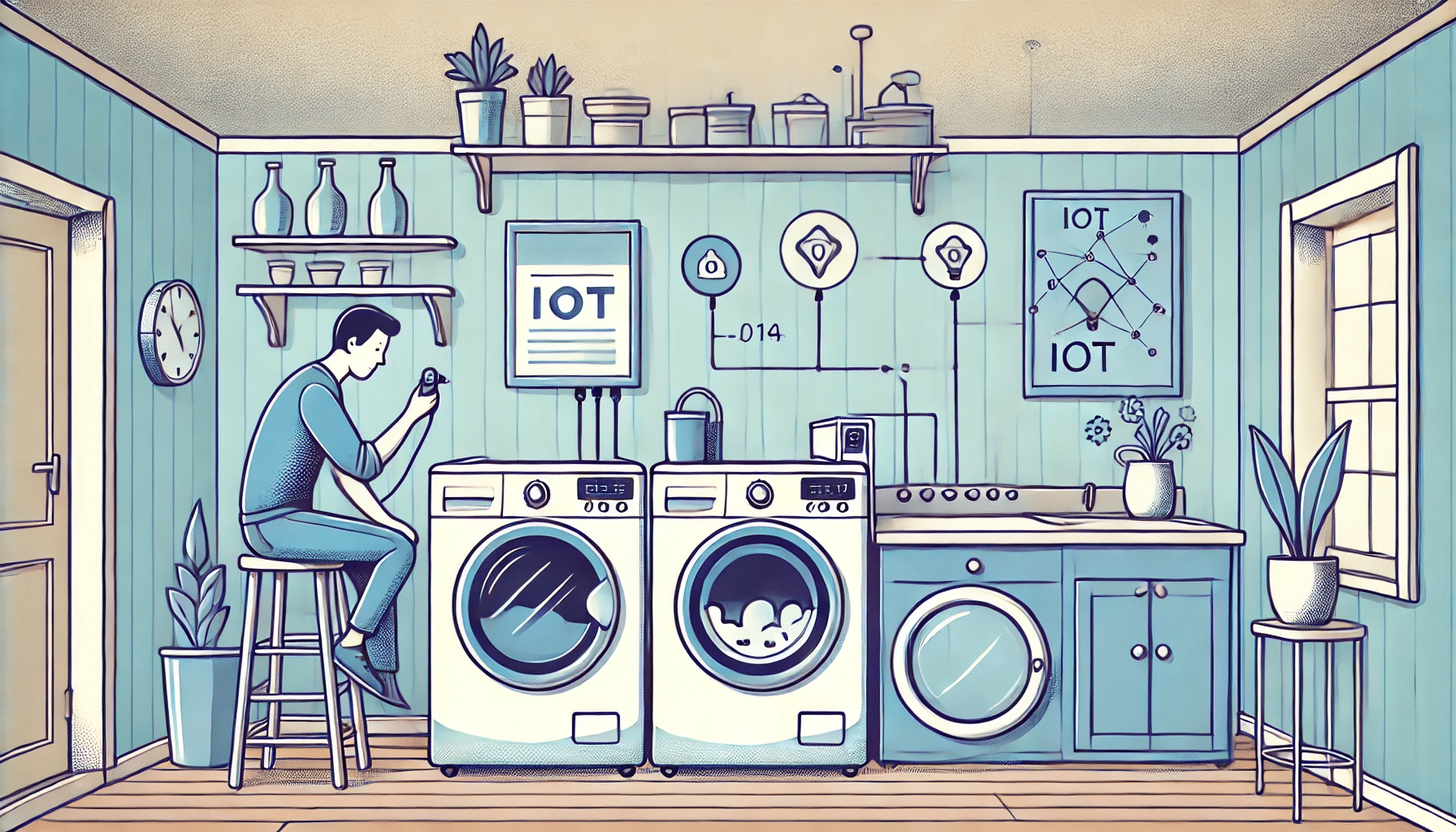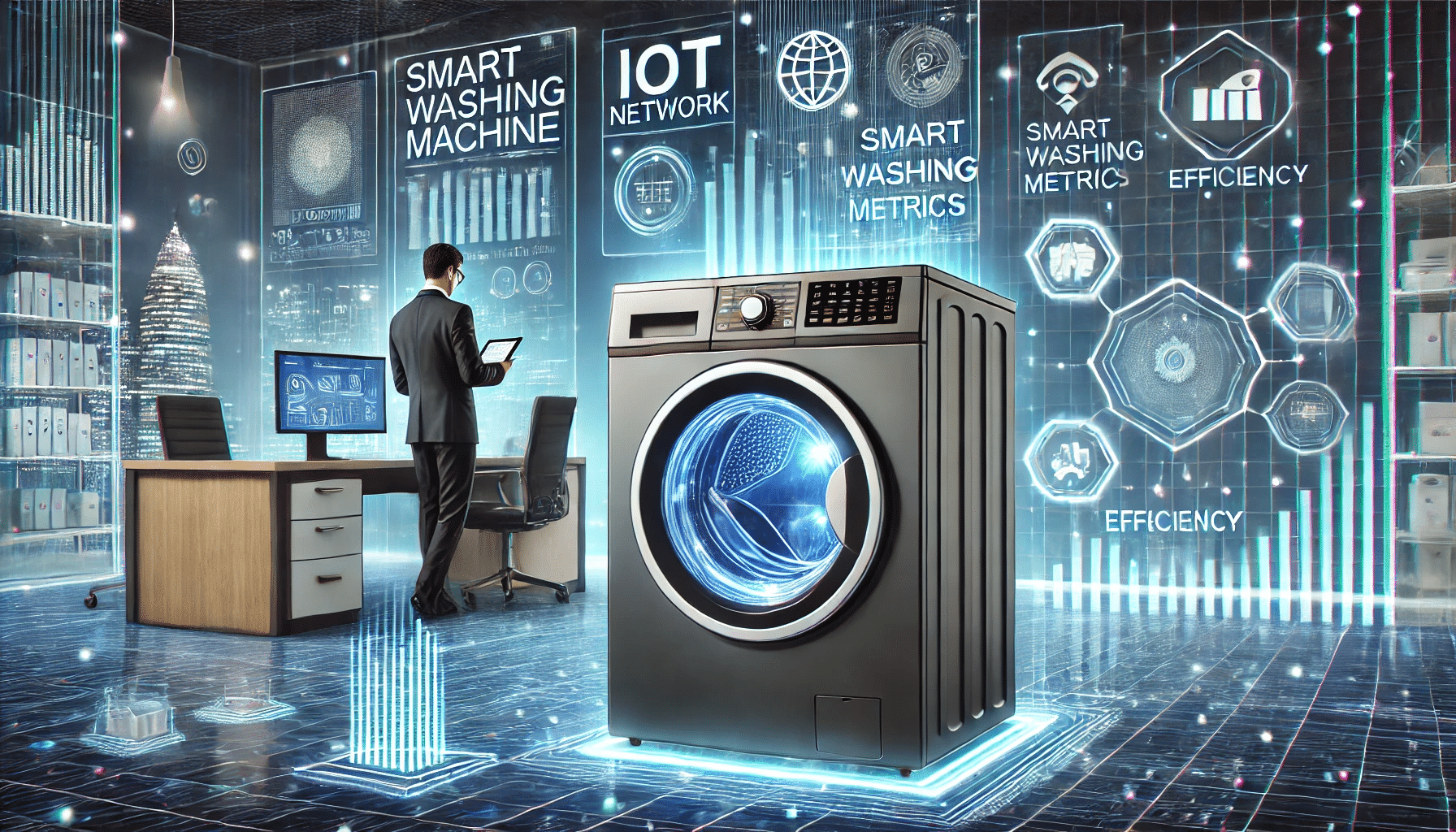Every business that uses washing equipment — be it a hotel, a restaurant, or even a tiny laundry — sooner or later faces a dilemma: keep fixing old machines or invest in new, smart technology. On the one hand, replacing all the equipment seems unreasonably expensive, and on the other hand, frequent repairs and inefficiency of equipment can lead to even higher costs in the long run. But taking a broader view?
The problem is that business owners rarely evaluate costs holistically. They only consider the cost of repairs or buying new appliances without taking into account operating costs, downtime, water, and electricity consumption. However, technology is not standing still: IoT (Internet of Things) allows traditional washing machines to be turned into smart devices that predict breakdowns, optimize resource consumption, and reduce operating costs — Analytics Insight.
However, is this transition justified? Is it worth investing in digital technology, or are washing machine repairs in Florida still a more sensible solution? Let’s explore this question in detail.

How IoT Reduces Operating Costs & Makes Laundries More Efficient
Many people still believe that automation in household appliances is just a marketing ploy with no real benefit. However, practice shows the opposite: intelligent diagnostics and control systems reduce operating costs by tens of percent.
How does it work? Modern “smart” washing machines are equipped with sensors that monitor water level, temperature, engine condition and even the degree of wear of bearings. All information is transmitted to a cloud-based system where AI analyzes possible failures and predicts breakdowns. As a result, the operator or business owner is notified of the need for preventive maintenance before the equipment finally fails.
Advantages IoT control of washing machines in numbers:
|
IoT feature |
Technical implementation |
Economic effect |
|---|---|---|
|
Real-time monitoring |
Sensors: vibration, temperature, water level, load. Sending data every 5 seconds. |
Reduced downtime by 40%, extending service life by 30%. |
|
Automatic diagnostics |
Analysis of the operation of the engine, bearings, heating elements, pumps. Predictive analytics based on Big Data. |
Reducing the cost of emergency repairs by 30%, reduced wear of components by 25%. |
|
Optimizing resource consumption |
Machine learning algorithms regulate the supply of water, electricity, and detergents. |
Reduced water/electricity costs by 20-35%. |
|
Remote control |
API integration with mobile applications, cycle management, remote diagnostics. |
Reduced personnel costs by 15-20%, minimizing the human factor. |
|
Automatic download scheduling |
Intelligent load balancer, peak hour analysis, load redistribution. |
Increased laundry capacity by 15-25%. |
Companies providing washing machine repair services in Florida are actively helping businesses go beyond fixing breakdowns; it’s about implementing smart maintenance strategies. Their approach combines traditional machine diagnostics with the ability to modernize equipment through IoT modules.
How does this work in practice? For example, a hotel chain in Miami approached Spark Service PRO with the problem of frequent failures in washing machines due to overloading. During an audit, experts found that the machines were consuming more water and electricity than necessary and were also running inefficiently. Instead of simply making repairs, it was suggested that load sensors be integrated and washing algorithms optimized.
The results speak for themselves:
- Average payback period for IoT integration: 12–18 months.
- Reduced spare parts costs: up to 20% per year.
- Reduction in unscheduled repairs: 35-50%.
While the benefits are obvious, the question remains: do new technologies really pay off, or is it just a fashion trend?
Repair or Replace: When It’s Worth Investing in New Equipment
Old equipment often breaks down, but repairing it is cheaper than buying new equipment. However, when you consider not only the cost of repair but also the hidden costs of operation, the situation is no longer so clear-cut.
California has strict energy efficiency standards for appliances set by the California Energy Commission (CEC) and Energy Star. For washing machines, the key metrics are:
- IMEF (Integrated Modified Energy Factor) — energy efficiency coefficient.
- CEC standard: ≥ 1.84 (the higher the better).
- Energy Star (2024): ≥ 2.06.
- IWF (Integrated Water Factor) — water consumption per cubic foot of loading.
- CEC standard: ≤ 8.4 (the lower the better).
- Energy Star (2024): ≤ 3.2.
When is a repair justified in terms of energy consumption?
- If the machine consumes less than 400 kWh per year (for 4.5+ Cu. ft. models).
- If water consumption is less than 15 gallons (ca. 57 l) per cycle (less than 11 gallons (ca. 42 l) is optimal).
- If the machine has Energy Star certification (or similar standard).
When is it best to replace?
- If your washing machine consumes 600+ kWh/year and wastes 20+ gallons of water per cycle — it’s more expensive to operate than to buy a new model.
So, if your machine is within today’s energy standards and repairing it is economically feasible, it’s better to extend its life. But if the unit uses too much energy and water, replacing it can reduce your utility bills by $100-150 per year.
How a Business Can Properly Transition to IoT Without Incurring Unnecessary Costs
Let’s say a business owner has decided to upgrade their tech. But how can it be done with minimal financial risks? Full replacement of equipment at once is too costly an option. The optimal approach is a gradual transition, with testing new solutions on a few machines.
For example, you can introduce one or two smart washing machines and monitor their performance over several months. If the actual cost savings match the stated cost savings, the transition can be scaled up.
It’s also important to consider the following factors:
- Compatibility of the new machines with existing infrastructure. Some IoT technology service systems require cloud connectivity, which may require additional network customization.
- Choosing a reliable manufacturer. Not all smart washing machines are really high quality. It is worth choosing trusted brands that offer warranty service and technical support.
- Staff training. New technologies require small but mandatory training of employees so that they can effectively use the diagnostic and control functions.
Should you contact service companies when switching to smart technology? Yes, because a proper audit of your existing equipment and an assessment of the costs of modernization can help you avoid unnecessary expenditures. For example, washing machine repair companies in Florida, such as Spark Service PRO, can not only repair equipment but also advise on upgrades, helping you decide the best strategy for your business.

Conclusion
Laundries, hotels and HoReCa companies that implement smart technology gain clear benefits: fewer breakdowns, lower resource consumption, predictable maintenance costs. However, to make an informed choice, it’s important to consider not only the costs of new equipment but also the long-term benefits.
If the washing machines in your business require frequent repairs, consume too much water and electricity, and are becoming increasingly expensive to maintain, it may be time to consider upgrading. On the other hand, if machines are stable and inexpensive to repair, there’s no need to invest in IoT yet.
The main conclusion is that every enterprise should make a decision based on its needs. However, new technologies cannot be ignored — sooner or later, they will become the standard (Mckinsey).







